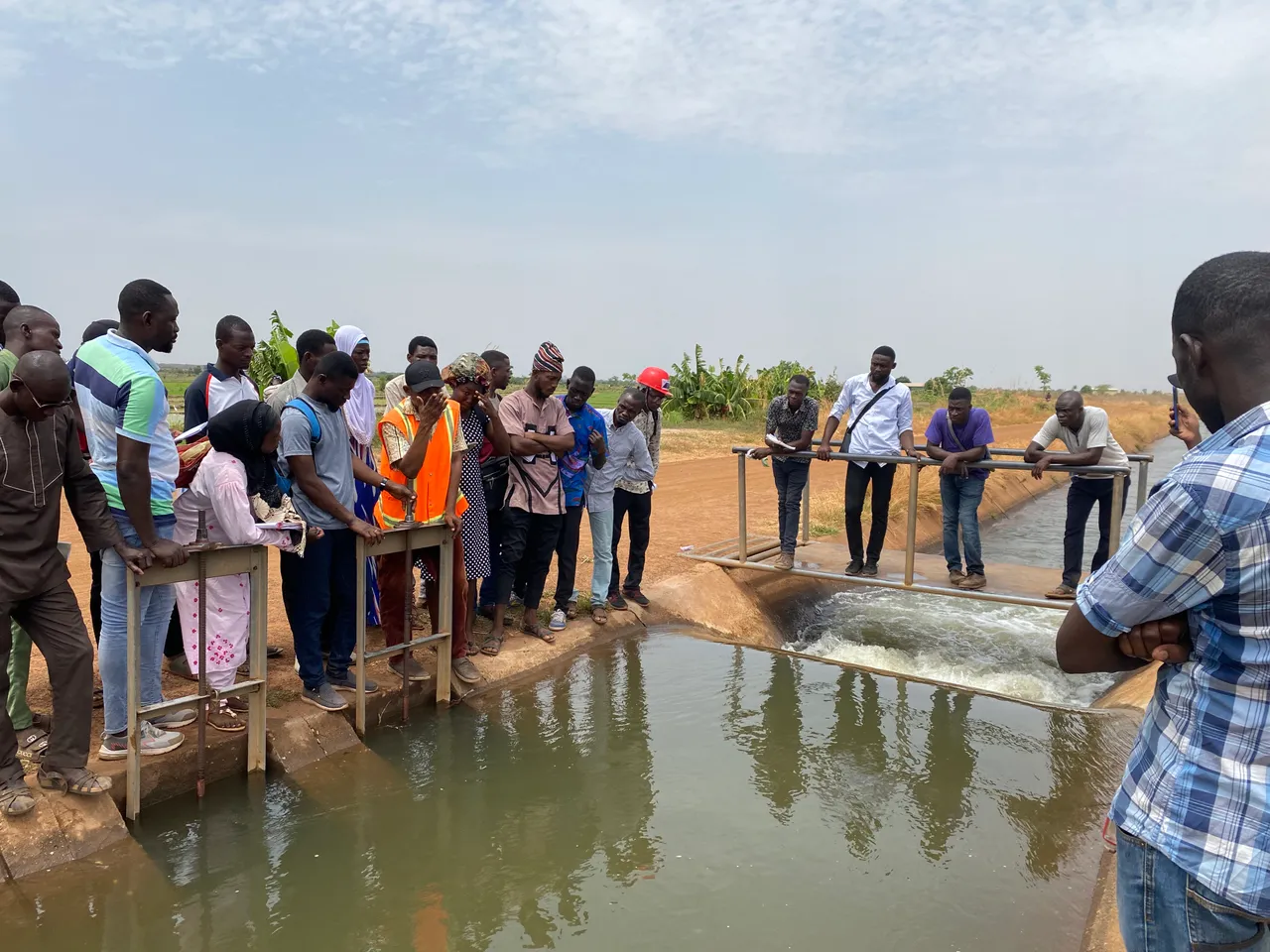Hello to all of you folks in this amazing community. I bring you greetings from Ghana. My name is Native Boy, I’m a Student of agriculture technology. I live in Tamale Ghana. Today I would love to share with you my first post in this community which happens to be an important component of agriculture in my country. The Bontanga irrigation scheme.

Crops production in Ghana is mainly influenced by rain fed agriculture. The northern regions of Ghana has one of the best topographies and soil conditions suitable for growing crops, however the experience only one short rainy season in a full year. This has limited the potentials of crops production in these parts of the country. The Bontanga irrigation scheme is one of the few irrigation projects in Ghana that facilities crops production.
Bontanga irrigation scheme is the biggest irrigation project in the northern region. It the second largest irrigation scheme in the whole country. It has a total catchment area of 165 square kilometers and a potential irrigable area of 800 hectares. The various components of the irrigation scheme include the following

Dam Wall
The dam wall is the upper part of the reservoir where people and vehicles can move on. It is also called the crest. The dam wall of the Bontanga irrigation scheme is 1.9 kilometers long and a height of 12 meters.


The Reservoir
The reservoir is the wall or barrier that stores the water which is distributed to the irrigable fields. The reservoir of the Bontanga irrigation system has a capacity of 25 cubic meters and a dead storage of 5 cubic meters. The main method of discharging water or irrigation here is by gravity.



The Spill Way
The Bontanga irrigation scheme had a drop inlet spillway. It has a height of 10 meters. It’s called the morning glory due to fact that it actually looks like the morning glory butterfly.



Canals, laterals and sub laterals
The Bontanga irrigation scheme has main canals, two main valves and 28 laterals. It has 1.5 meters long optic valves. It has trapezoidal canals.







Irrigable fields and irrigation methods
The main crops cultivated at the Bontanga irrigation scheme are rice and vegetables. It has 255 hectares in the mainland for rice cultivation and 240 hectares in the uplands for vegetable cultivation. The major vegetables produced here are pepper, cucumber, onions and okra. Theses crops are usually mixed cultivated with small quantities of cassava.
The main irrigation methods at the Bontanga irrigation scheme are basin irrigation used mainly for rice cultivation and furrow irrigation used for vegetable and maize cultivation.
The farmers at the sites complain of a recent nematode infestation which is seriously degrading the quality of soil fertility and hinders cultivation of certain vegetables, especially okra.





Other components of the irrigation scheme include the metro or weather station where water evaporation rates, wind speed and intensity, and rainfall intensity are measured. And project offices where management and accounting responsibilities are carried out.
It was a great opportunity to visit and learn about the Bontanga irrigation scheme and its important contribution to agriculture in Ghana. Thank you so much for your time. It’s my pleasure sharing with you all, I hope you learned a thing or two.

All pictures in this post belong to me. This was a class trip, all other persons in these pictures have given consent to be published.
